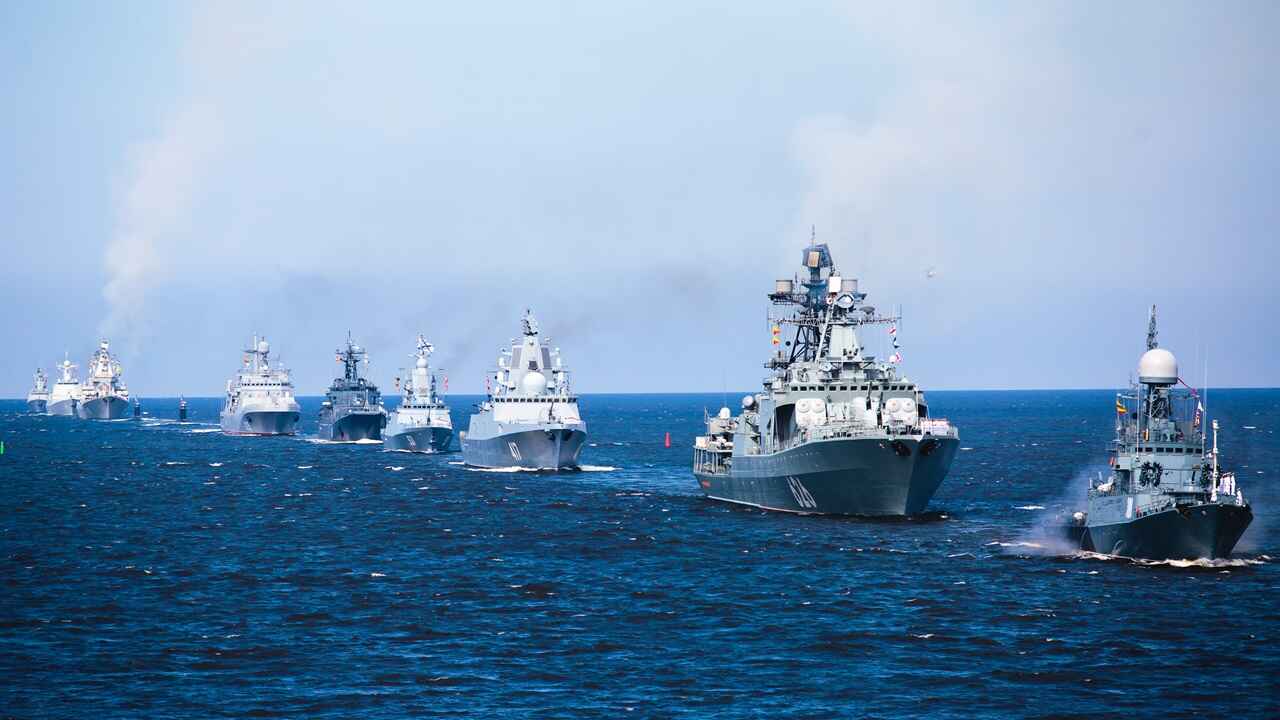
Russia’s Mediterranean Fleet Is in Big Trouble
The loss of the Tartus port should be seen as a major blow to Moscow’s ambitions.
The Russian Navy will likely have fewer submarines operating in the Mediterranean Sea after the new Syrian government terminated its longstanding investment agreement with the Russian company that has managed the port of Tartus.
The facility, which Moscow has operated since 1971, has seen significant upgrades in recent years. In 2019, Damascus signed a 49-year lease with the Russian-based Budtransgaz, with the company pledging to invest $500 million to further develop the port.
It is unclear how much of the money has already been spent. But by all accounts, the Russian Navy will now need to find a new base of operations.
Withdrawal From Tartus Being Completed
On Wednesday, the Russian roll-on/roll-off (Ro-Ro) cargo ship Sparta III received permission to enter the port at Tartus, but only to receive Russian equipment “awaiting evacuation,” the Kyiv Post reported, citing security research group Arab-Military. It was just a day earlier that Sparta II had also been granted permission after waiting off the coast for several weeks.
The situation is better for the Kremlin than just a few weeks ago, when there was speculation that Syria’s new ruling government might block Russian efforts to evacuate Tartus altogether. That doesn’t appear to be the case, but this outcome is little better: like a bad breakup, Russia is only being allowed to come and retrieve its things!
The loss of the port should be seen as a major blow to Moscow’s ambitions. Since launching its unprovoked invasion of Ukraine nearly three years ago, Tartus has taken on even greater importance.
As the Royal United Services Institute stated earlier this month, though Turkey “maintains warmer relations with Russia than most NATO member states… it is the reason Russia has lost direct access to the Black Sea through the Bosporus. This is a key driver for why Russia needs a foothold in the Mediterranean–to provide the necessary logistical and maintenance support for a Mediterranean fleet, including the ability for munitions resupply.”
New Home in the Region? Options Exist, But Are Limited
Without Tartus, Russia will need to find another port—or decrease its presence in the Mediterranean, notably of its diesel-electric submarines.
As the UK Telegraph newspaper also reported, “Tartus is the only Russian facility in the region capable of sustaining its diesel-electric powered submarines, which are cheaper and often quieter than nuclear-powered boats but require regular refuelling.”
The paper of record added that the Russian Navy has “maintained a near constant undersea presence of at least two attack submarines in the region since 2013.” That is until the Project 636.3 class (NATO reporting name Improved Kilo II) submarine Novorossiysk departed the region earlier this month. Commissioned in August 2014, the boat is armed with Kalibr cruise missiles.
“Without Tartus, any of Russia’s submarines—diesel-electric or nuclear—deployed in the region would have to remain at sea, with only the possibility of an occasional visit to a friendly port that could not offer long-term logistical and infrastructure support,” the Telegraph further noted.
It is possible Russia could deploy its nuclear-powered submarines to the Mediterranean, but that is unlikely. The waters are a de facto NATO lake that has limited entry points and the Kremlin may not want to have the movements of the subs tracked.
Moscow may be looking for other options. Perhaps the most likely of these is Algeria—which maintains friendly relations with Russia. Algiers is likely on track to receive the Sukhoi Su-57 (NATO reporting “Felon”) fifth-generation fighter, and continues to buy other Russian military hardware. Russian warships made a port call to Algiers last summer and again in November.
However, Moscow is engaged in a delicate dance of diplomacy in North Africa, moving closer with Mali—and that could nix any plans for a Russian base in Algiers or Mers-el-Kebir. Balancing relations with both nations will be increasingly difficult.
The other option would be Libya, but the situation would mean working with Khalifa Haftar, a warlord who controls the eastern and southern parts of the war-torn nation. That would likely be met with opposition by the UN-backed government. Moreover, it is questionable whether the ports of Tobruk or Benghazi are large enough to support Russian naval vessels—while the conditions of the facilities following years of civil war are also not clear.
Finally, Russia may be reluctant to invest in the Libyan ports given the political situation. For now, Russia may be left with few options, and that could mean the end of Moscow’s subs in the region.
About the Author: Peter Suciu
Peter Suciu is a Michigan-based writer. He has contributed to more than four dozen magazines, newspapers, and websites with over 3,200 published pieces over a twenty-year career in journalism. He regularly writes about military hardware, firearms history, cybersecurity, politics, and international affairs. Peter is also a Contributing Writer for Forbes and Clearance Jobs. You can follow him on Twitter: @PeterSuciu. You can email the author: [email protected].
Image: Shutterstock.